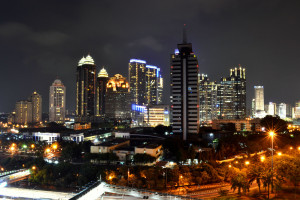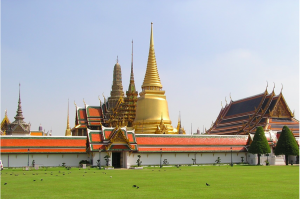By Minsi Chung February 17, 2015
Southeast Asia is rich terrain for business journalists. Bounded by China to the north, Australia to the south, New Guinea to the east and India to the west, the diverse region has a larger population than the European Union at 600 million, and is developing rapidly. With the Association of Southeast Asian Nations (ASEAN) planning to unite under a single economic zone, the ASEAN Economic Community, by the end of 2015, it is poised to become a bigger player on the global economic stage. The tech sector in particular is one worth watching, given the central role it continues to play in the region’s economic growth, as well as the rising number of tech acquisitions and startups in some of its smaller economies.
But covering Southeast Asia as a foreign reporter can also be a formidable challenge. Given the wide variety of different languages, political regimes, stages of economic development, degrees of press freedom, religions and customs, it is nearly impossible to generalize about Southeast Asia as a whole.
I recently spoke with Wall Street Journal reporter Newley Purnell, who is based in Singapore and writes about technology across Asia, with a focus on Southeast Asia. Purnell, who covers consumer trends, and tracks startups and venture capital in the region, has recently managed to pick up a number of exclusives.

Downtown Jakarta
©Muhammad Rasyid Prabowo/ Flickr
He was the first to report on the price of Blackberry’s new high-end smartphone, and broke the news that Twitter would open new offices in Hong Kong and Jakarta. Among other stories, he has also profiled Lazada, a startup that’s trying to become the Amazon.com of Indonesia; detailed the way Samsung is trying to get users hooked on locally tailored apps; and interviewed the chief executive of Evernote and Facebook’s Asia-Pacific advertising head.
Purnell joined the WSJ in 2014, but covered the region from Bangkok for six years before that, contributing to Quartz, NewYorker.com, and The New York Times, among other publications. He received a Bachelor of Arts in English from Emory University and a Master’s in business and economics journalism from Columbia University, where he was a Gray International Reporting Fellow. We chatted about how he develops relationships with sources in a region with so many different borders, both geographic and cultural, about some of his best sources, and about the stories he has enjoyed most.
Minsi Chung: You’ve had a number of exclusives while working with WSJ, what was the process you went through to achieve those?
Newley Purnell: I’ve mainly tried to establish good relationships with sources, earn their trust, be persistent, and ask the right questions. I think those are the key elements.
Chung: Does getting scoops help you get more scoops? Do you think sources start to see you as someone worthy of scoops?
Purnell: A goal I have is simply to be an excellent resource for WSJ’s audience on tech issues in Asia, especially Southeast Asia. I want to own that beat. I think if people see that your coverage is accurate and reliable, that pays dividends. Getting stories right is always the most important thing. People recognize that and see that you’re reputable and fair. Then maybe they’re more likely to talk to you.
Chung: How do you establish trust with sources as a foreigner?

The Grand Palace, Bangkok, Thailand. wikimedia commons
Purnell: This isn’t really an issue because Singapore is so open to foreigners, and many companies have their headquarters here, so often I’m dealing with people from a wide variety of backgrounds. But during my time in Thailand, for example, I found that it was important to take time to study the language and learn Thai customs. That allowed me to understand the people there a little better, and I felt it was important to do that anyway to understand the way Thai society worked.
Chung: Are there certain types of stories that you think you may have more access to as a foreigner?
Purnell: I don’t think I have access to certain kinds of stories, but I probably approach them in different ways than other reporters might. That’s because our audience is global, so we always want to take into consideration international factors, looking specifically at what’s happening in Asia but keeping in mind that our readers are all over the world.
Chung: How have you built a network, especially in a large and diverse region such as Southeast Asia?
Purnell: It’s nothing revolutionary. I just try and meet as many people face-to-face as possible and be open to new ideas and connections. Sometimes the most interesting ideas arise when you talk to people who you might not think would have much to say about your beat. Sometimes those people, who are only tangentially involved in tech, have the most interesting insights or anecdotes. These days smartphones and the Internet and new kinds of gadgets touch so many peoples’ lives. And of course, I rely on social media, Twitter especially, to keep track of what folks are saying across the region.
Chung: What are the challenges you face with reporting on Southeast Asia? Is anything off limits?

Terraced fields in Sa Pa, Vietnam. ©wikimedia commons
Purnell: One of the biggest challenges, but also what makes it interesting, is that the region is so diverse. “Southeast Asia” is really an artificial construction. You can get on a plane in Singapore and in several hours be in rural Vietnam, the middle of Jakarta, in downtown Hong Kong, in Malaysia. Each place is different, whether it’s the language or which messaging apps or e-commerce sites are hot.
Chung: What have been the most interesting technology issues you have covered, and how are they different to reporting on technology in the U.S. or European countries?
Purnell: One of the most intriguing trends for me has been the way that low-price smartphone makers have shaken things up, and what it means when consumers can buy such devices for just $50 or $100 and get hooked up to the web, especially in places with low internet penetration, like in parts of Asia. Domestic brands are making huge gains in places like India and Indonesia, and China’s Xiaomi and Lenovo are challenging bigger manufacturers across the region. With its market share slipping, for example, Samsung has tried creating its own special apps to appeal to users in countries like Malaysia and the Philippines, which I wrote about.
I’ve also enjoyed writing about messaging apps, and how fractured the markets in Southeast Asia are. This is a region with about 600 million people, and in each country people are using various apps. In Vietnam, there’s even a messaging app specifically for Vietnamese people.
But I’d also say some of the most important stories I’ve worked on had little to do with tech. I helped with our coverage of Malaysia Airlines Flights 370 and 17, the first which went missing in March last year, and the second which went down over the Ukraine in July. And I helped out with our stories from Thailand following the military coup in May. It’s been really rewarding to be part of such a big team effort, working with talented colleagues worldwide on such big stories.
****
Minsi Chung is a freelance writer based in Stamford, Connecticut. After completing a Master’s of Arts in Business and Economics Journalism at the Columbia Graduate School of Journalism in 2013, she worked for Goldman Sachs as a video producer, and completed a Bloomberg News internship. Prior to moving to the United States, Minsi worked as an on-air television, radio, and online news journalist with the Australian Broadcasting Corporation, where she was the state business reporter in Perth, specializing in mining and resources. Before becoming a journalist, Minsi was a qualified solicitor and barrister in Western Australia. She received Bachelor of Laws from Murdoch University, and also holds a bachelor’s degree in mass communication (public relations).
This entry was posted on Tuesday, February 17th, 2015 at 4:18 pm. It is filed under On the Beat, Q&As and tagged with ASEAN Economic Community, foreign reporter, getting scoops, Southeast Asia, startup, technology, Wall Street Journal. You can follow any responses to this entry through the RSS 2.0 feed.

Very nice interview Ms. Chung. Mr. Purnell must be a valuable asset for the WSJ.